'One of the greatest things' - Nigeria's art innovators on display in London
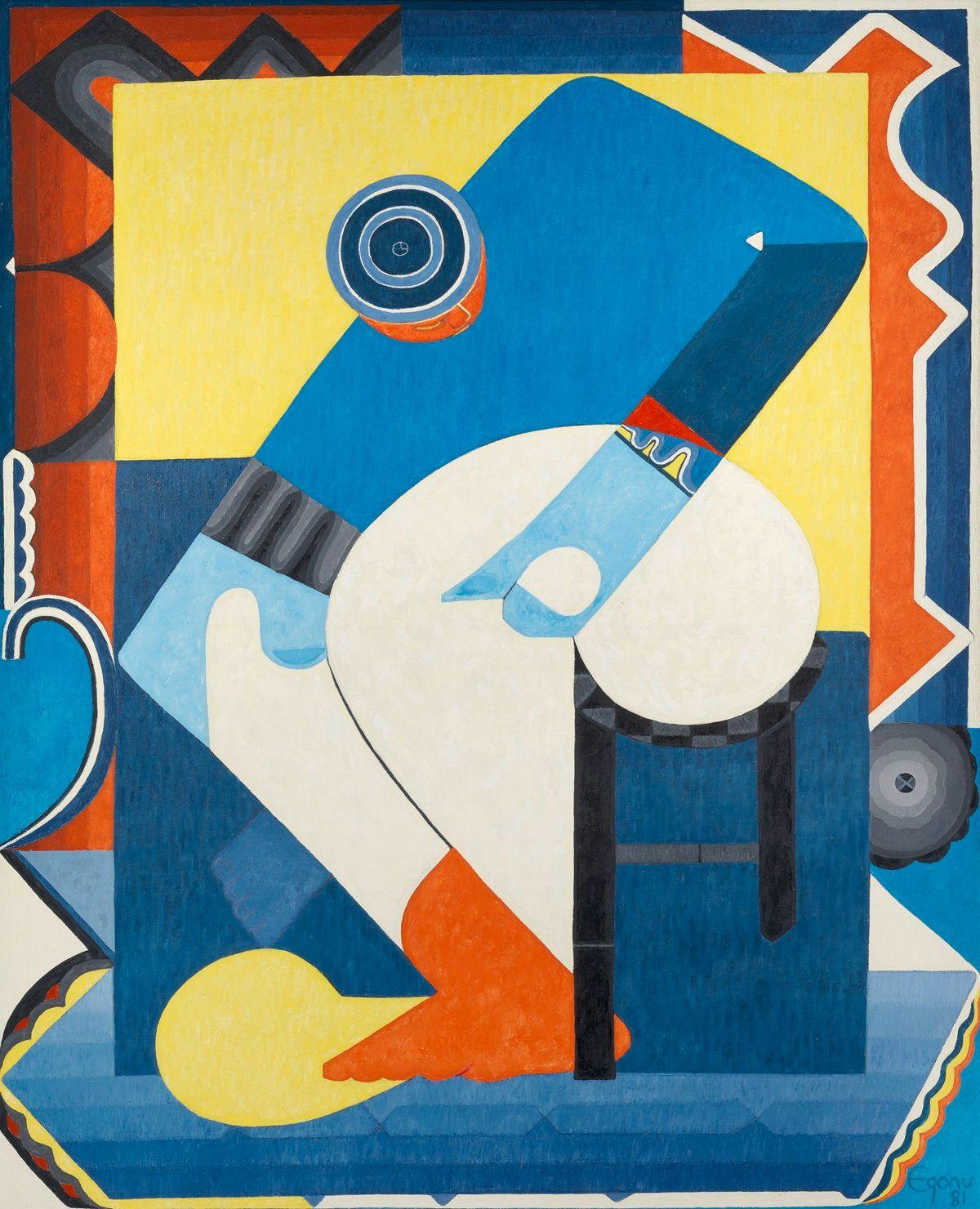
Uzo Egonu's Stateless People an artist with beret (1981)
- Published
This is "one of the greatest things to have happened, not only to my art, but to Nigerian artwork", 93-year-old painter and sculptor Bruce Onobrakpeya says as he looks around the rooms at the Tate Modern, one of London's premier galleries.
"The collection is fantastic and it brings back a lot of memories going back 50, 60, 70 years."
Onobrakpeya is among more than 50 artists whose work is going on show at the gallery on the south bank of the Thames as part of Nigerian Modernism, an ambitious presentation that spans a period from 1910 to the 1990s.
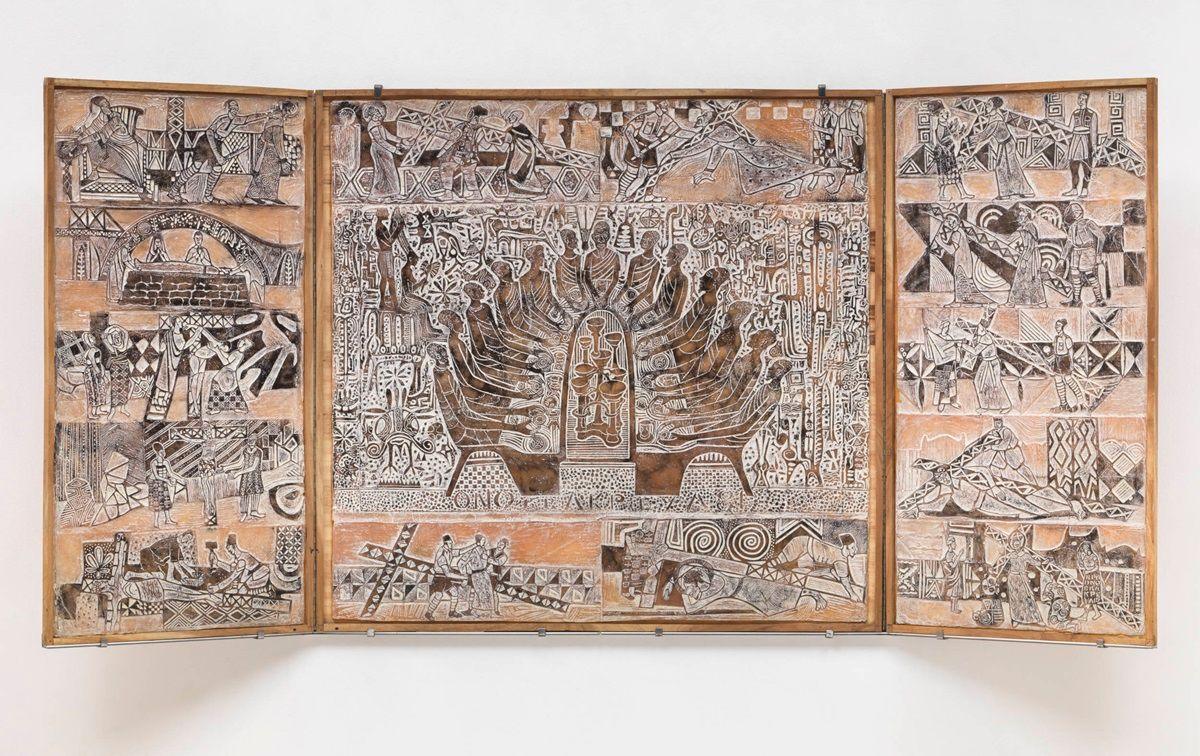
Bruce Onobrakpeya's The Last Supper (1981)
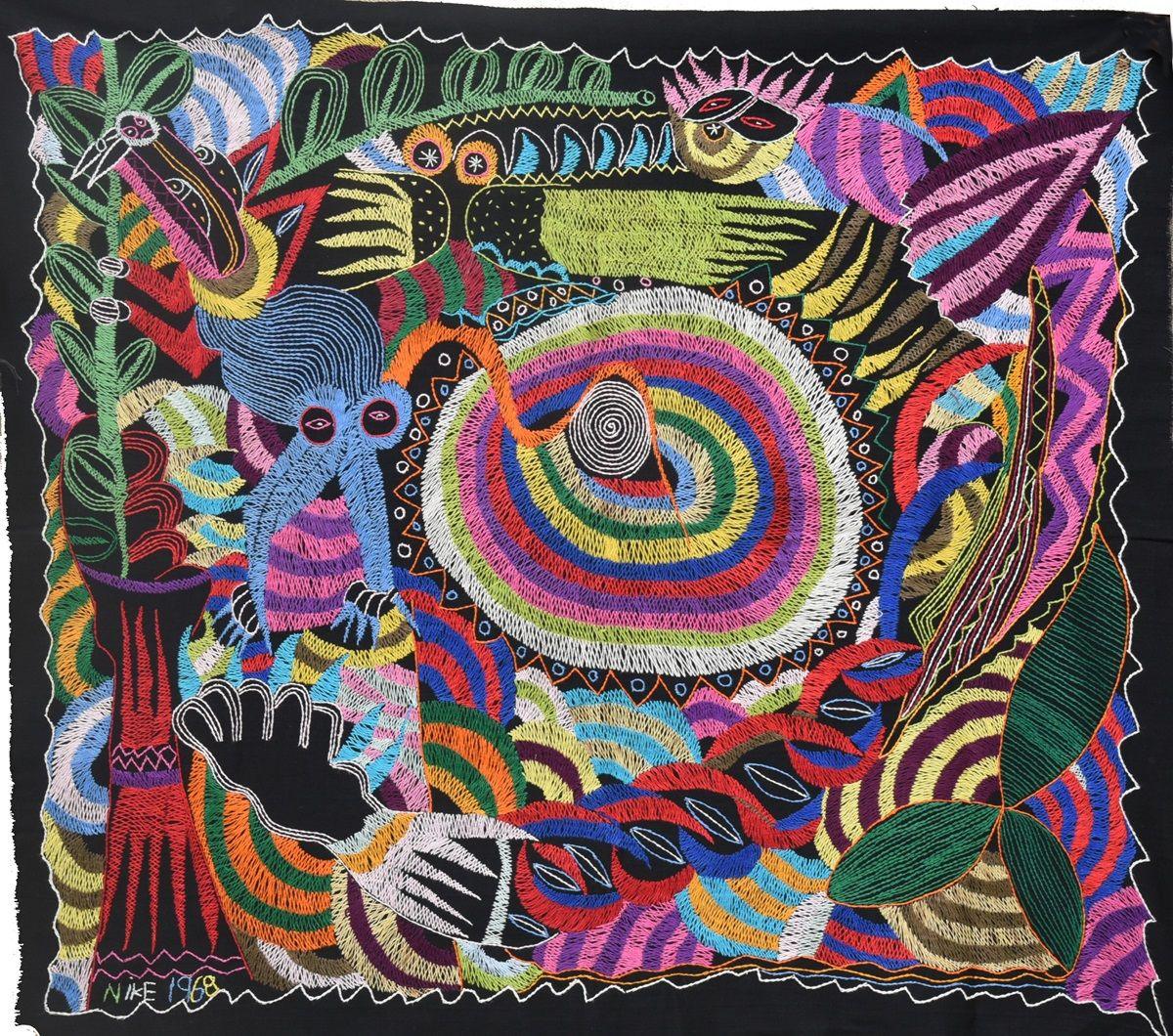
Nike Davies-Okundaye's Animal World (1968)
To Onobrakpeya, affectionately called Baba Bruce within art circles, Nigerian Modernism is "a transfer of the old ideas, old items, old technologies, old thought into a different, modern time".
It is "projecting the present, and showing the way towards the future".
Walking through the Tate's lofty rooms, pieces that blend indigenous Nigerian techniques like bronze casting, mural painting and wood carving, with more European styles are all on show.
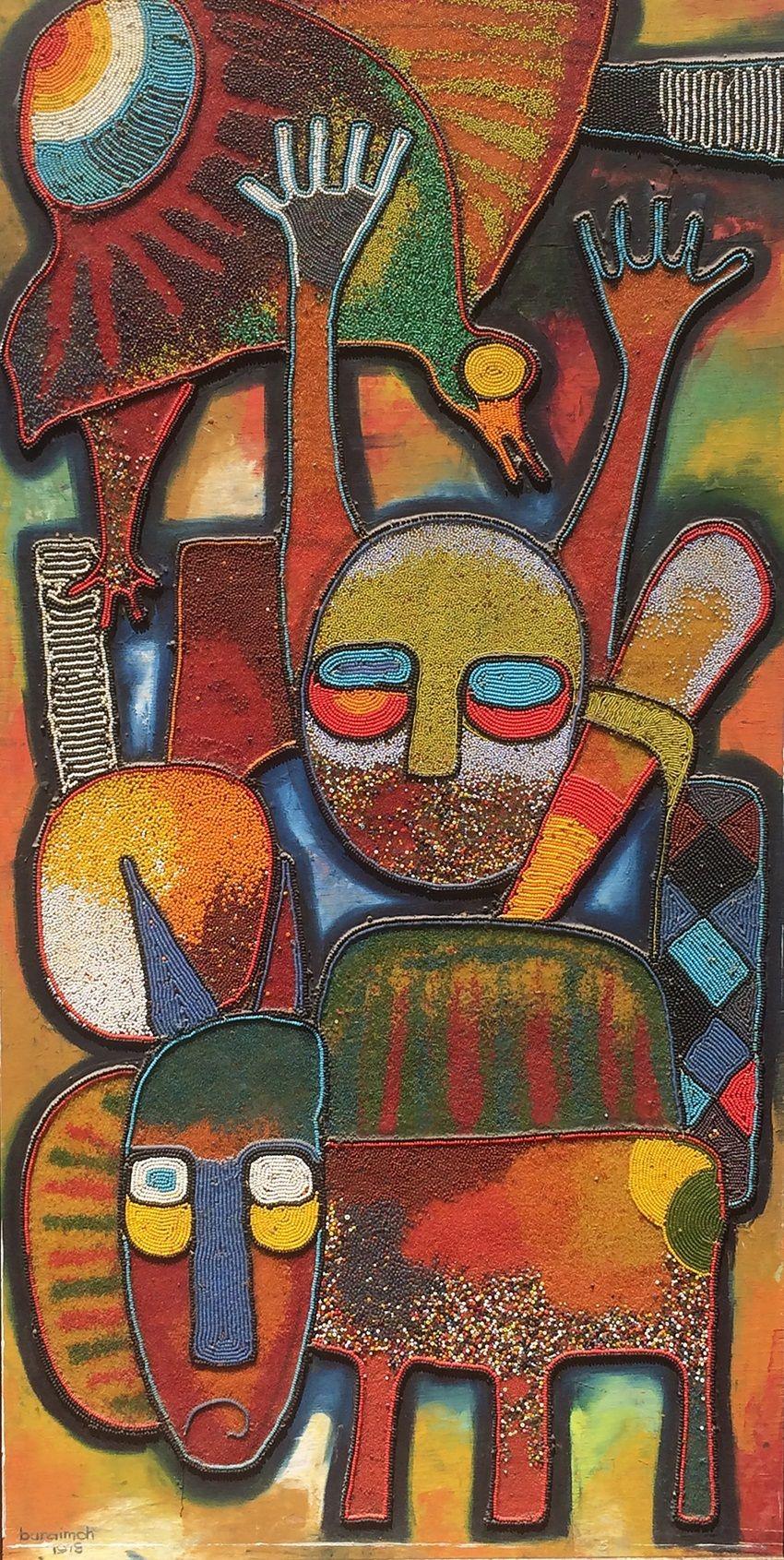
Jimoh Buraimoh's Figural Abstract (1973)
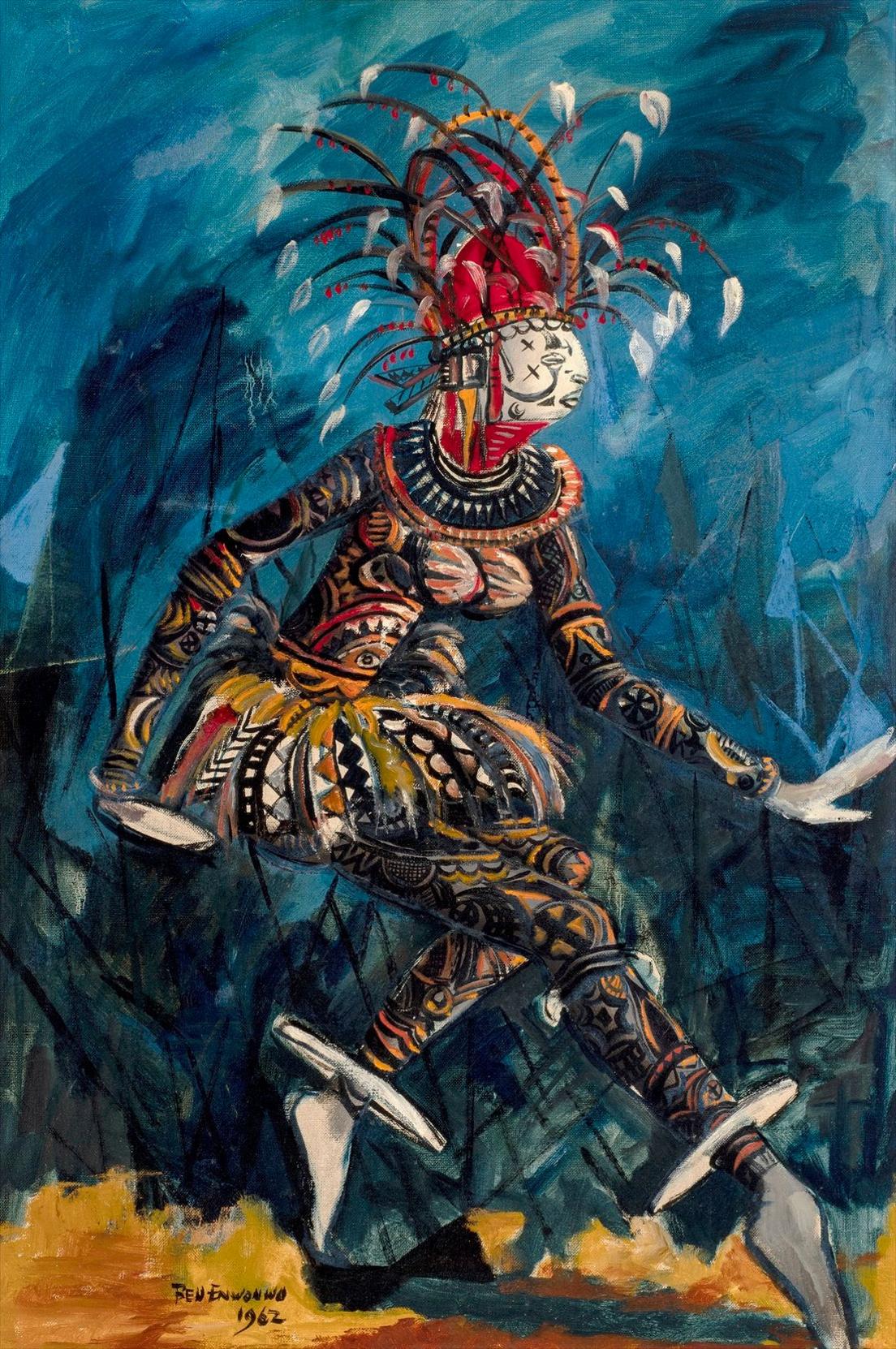
Ben Enwonwu's The Dancer (1962)
There are naturalistic paintings documenting real-life events and more abstract works, like those of visual artist, drummer and actor Muraina Oyelami.
Oyelami is pleased to be part of such a major exhibition, even if the label "modernist" means very little to him.
"I made artworks, paintings. If the writer or the critic now comes and says: 'This is modernism' or whatever 'ism'" - that's his or her terms of reference," he says.
"If that is what they call it, why not? I don't care."
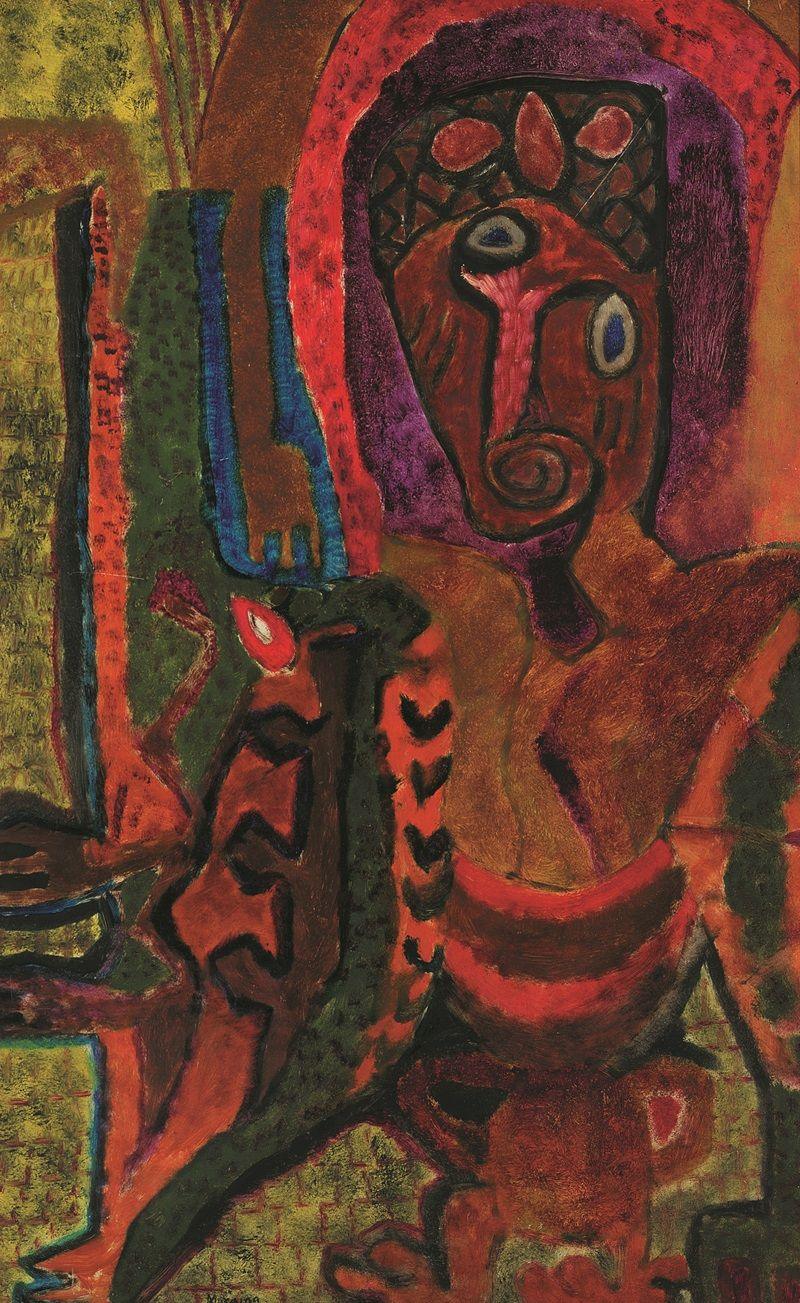
Muraina Oyelami's untitled painting (1965)
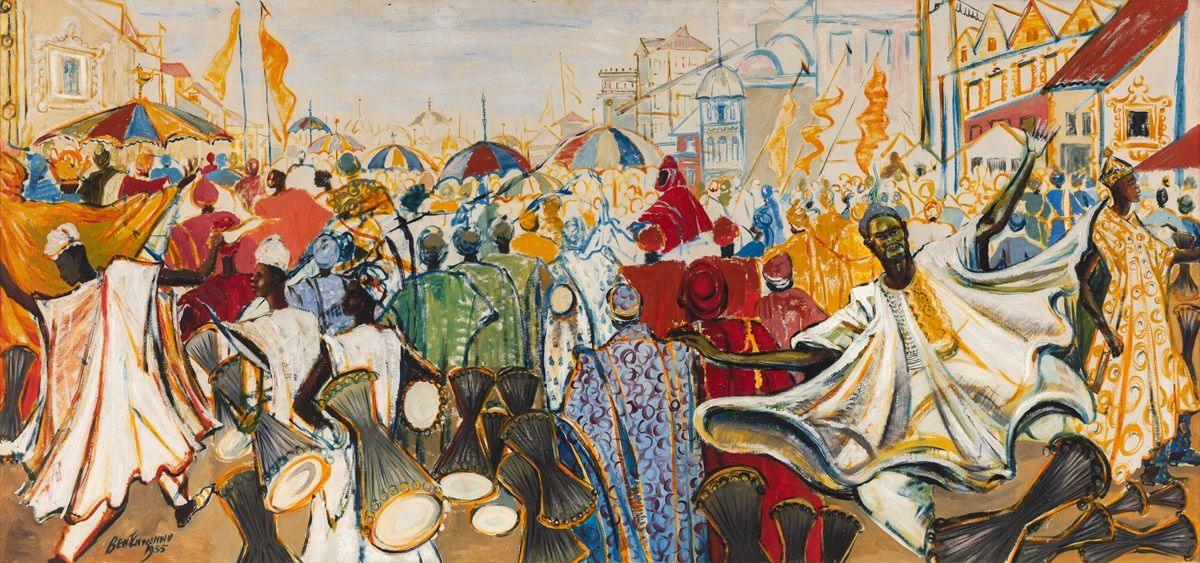
Ben Enwonwu's The Durbar of Eid-ul-Fitr (1955)
For Oyelami, the 1960s and 70s were an "exciting time" to be an artist in Nigeria. It was also a turbulent time - the Tate's collection tracks the nation's journey from a British colony, to a fledging, independent country, to the setting of a grisly civil war.
The Biafran war - which lasted from 1967 to 1970 - is reflected by artists from the Nsukka Art School, an influential art department and movement that was founded by students and professors at the University of Nigeria.

Obiora Udechukwu's Our Journey (1993)
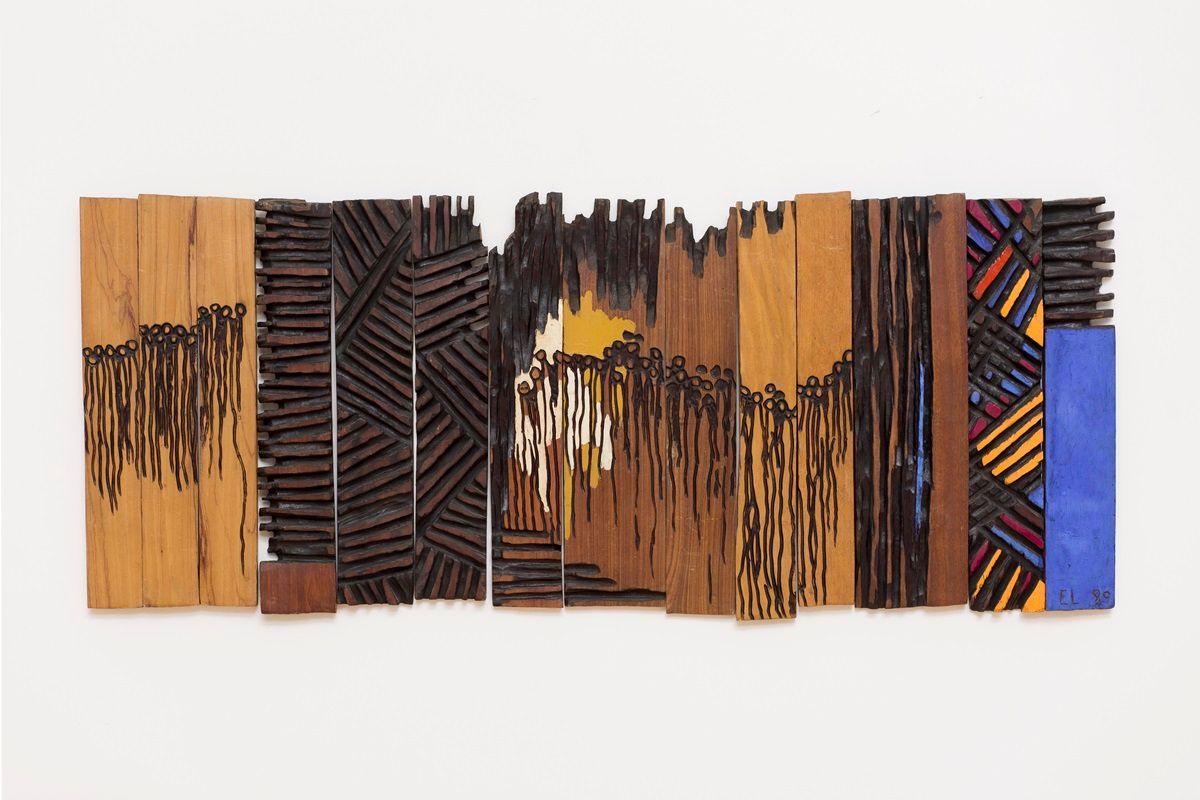
El Anatsui's Solemn Crowds at Dawn (1989)
It is one of many instrumental art collectives explored in the exhibition.
"It is not just about the way in which artists are working on their individual artistic projects - you get the sense that almost all the artists in this exhibition are guided by a principle of collectivity," notes Osei Bonsu, the exhibition's curator.
Bonsu has brought together a collection of incredible breadth - from watercolours to photography to miniscule thorn carvings to political cartoons. Artists hail from various ethnic groups and Nigeria's huge diaspora gets a look-in as well.
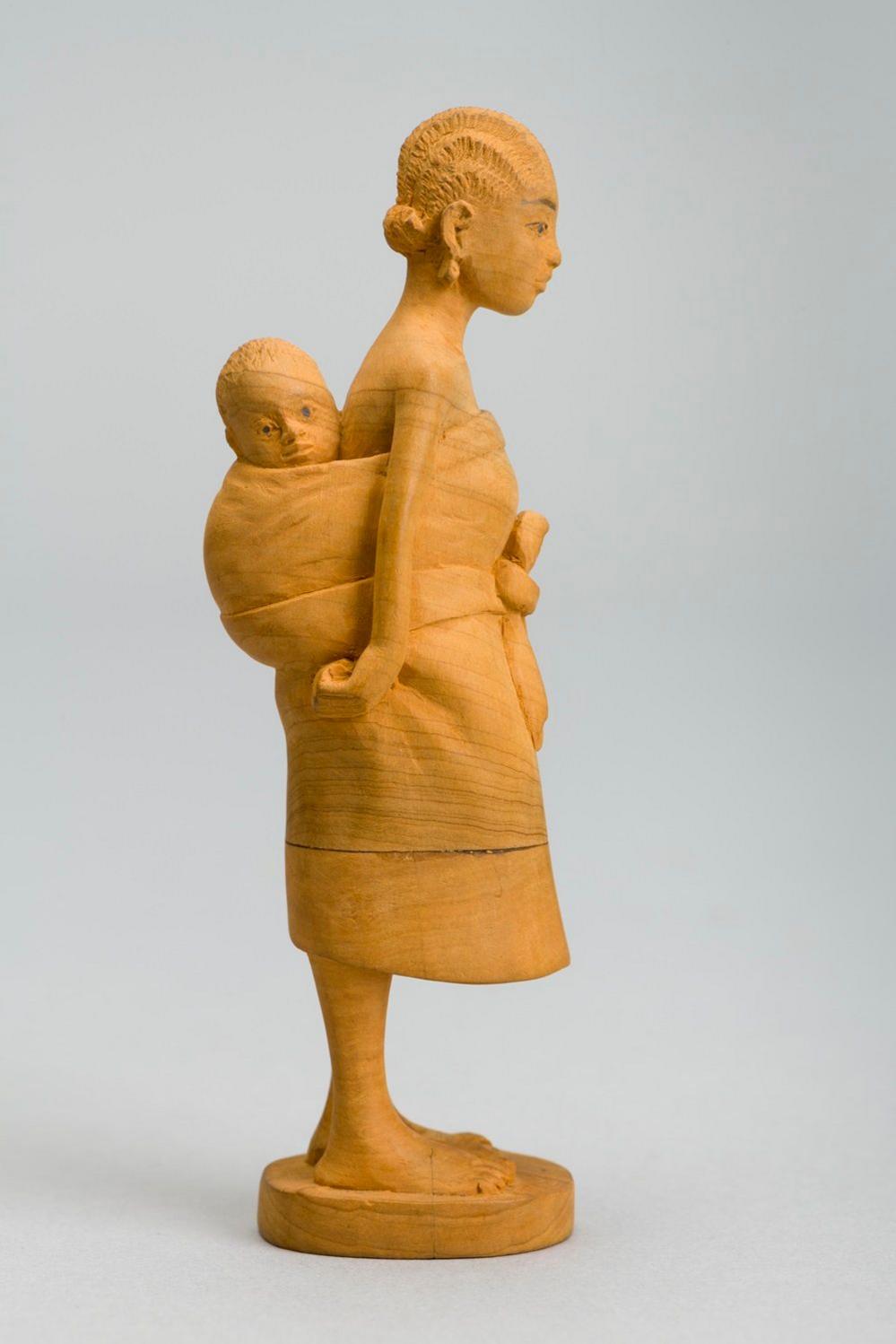
Justus D Akeredolu's thorn carving (circa 1930s)
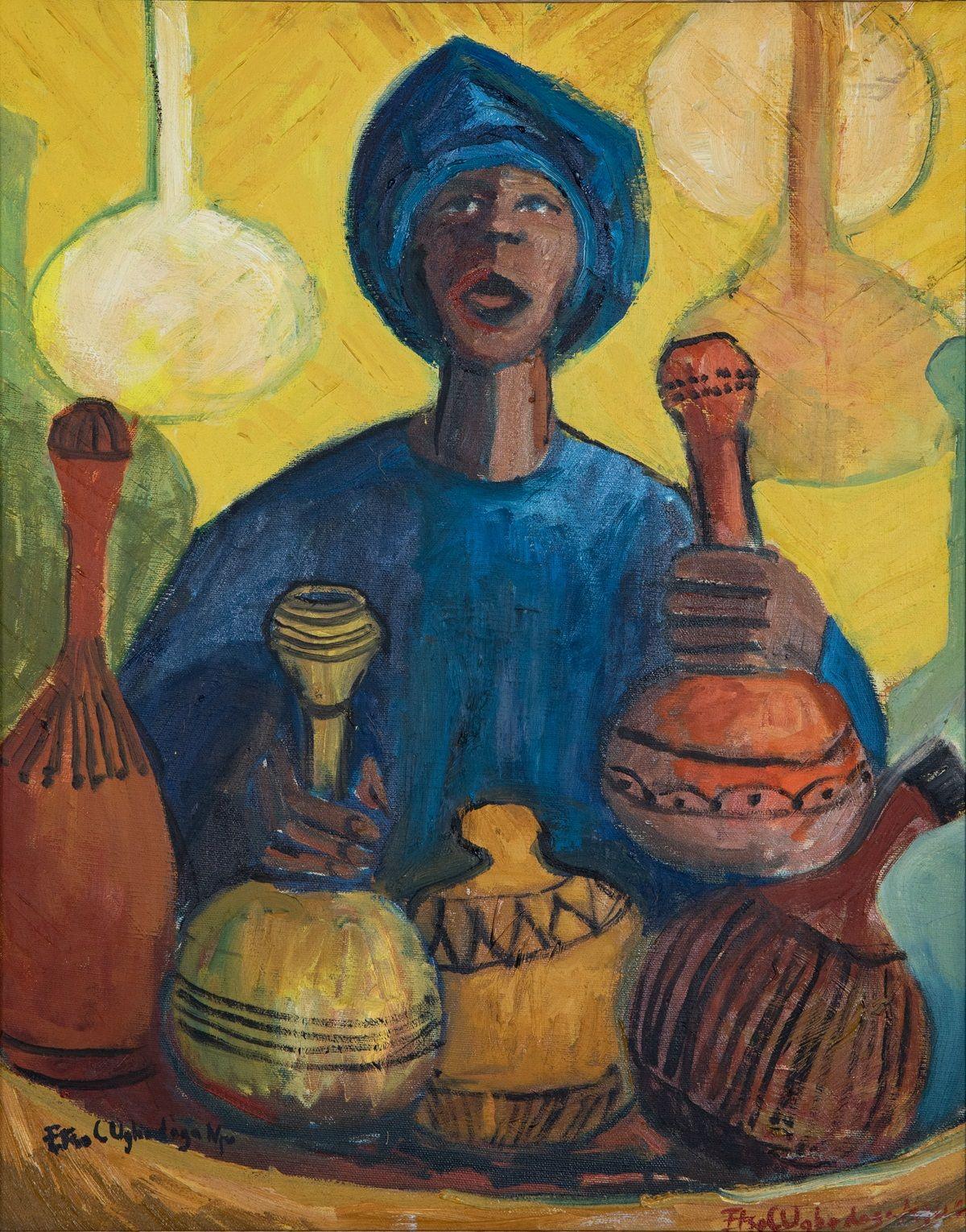
Clara Etso Ugbodaga-Ngu's Elemu Yoruba Palm Wine Seller (1963)
For all their differences, all the creatives represented have at least one thing in common, Bonsu says - "fashioning radical visions of what modern art could be".
Nigerian Modernism runs at the Tate Modern from Wednesday until 10 May next year, and hopes to illuminate a movement that has long been underrepresented on the global stage.
"It comes with a message that we can take home," Onobrakpeya says.
"It gives us hope, it gives us strength, and we're going to work harder and we're going to produce something even greater than this."
More BBC stories on African art:

Go to BBCAfrica.com, external for more news from the African continent.
Follow us on Twitter @BBCAfrica, external, on Facebook at BBC Africa, external or on Instagram at bbcafrica, external
BBC Africa podcasts
- Attribution